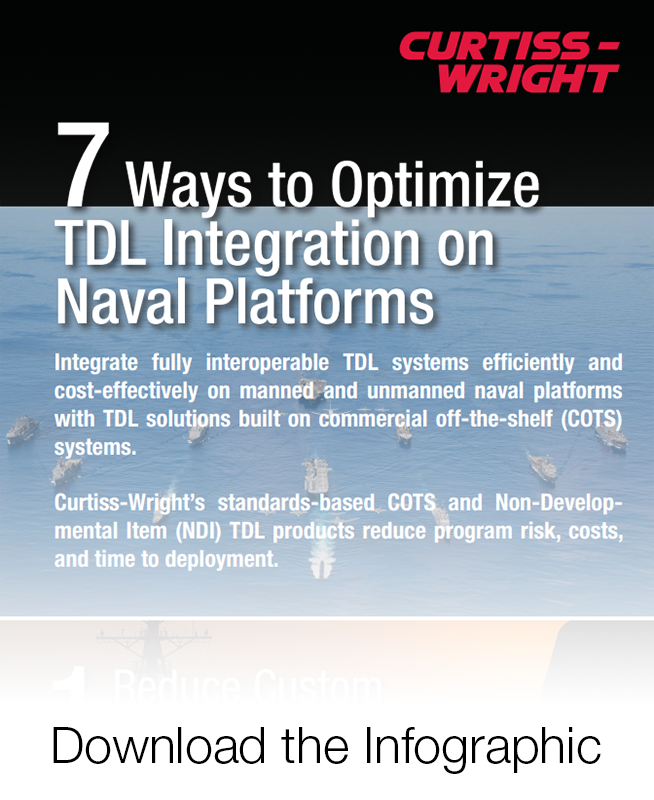
Interoperable tactical data link (TDL) systems are essential components of fully integrated naval communications systems on both manned and unmanned naval platforms. All naval command, control, and communications (C3) systems rely on tactical data link systems and standards to either transmit, relay, or receive critical data.
TDL interoperability enables tactical data to be shared between operators in real-time on manned platforms and enables data from unmanned platforms to be integrated into the C3 data streams. True tactical communications interoperability across all naval assets facilitates a common, mission-critical view of surface, subsurface, air, and space environments.

Difficulties of Developing Integrated TDL Systems
There are many TDL standards and systems used in naval communication technology. It’s therefore not surprising that successful system integration is vital to effective communications. Increasingly, TDL gateways and translators are being integrated on all naval platforms. This integration is a key consideration in naval commissioning, building, deployment, and maintenance programs, but does not come without its challenges.
Development Time and Cost
Unfortunately, TDL system integration has typically been a lengthy, costly, and resource-intensive custom process. Multiple tactical data link solutions from a variety of vendors are available, with varying versions too, which leads to increased integration and interoperability challenges.
Multiple Standards
The evolution of existing standards and the advent of new ones brings advanced capabilities to the warfighter while also presenting significant integration challenges.
For example, an aircraft carrier may support multiple tactical data link standards for a variety of communication requirements:
- Link 11 and Link 22 systems for situational awareness
- Link 16 systems for electronic warfare, imagery, free text, mission management, voice, friendly ID, and command and control
- Variable Message Format (VMF) systems for communication with fighters
The sheer number of different standards, and versions of each, requires system integrators to have deep knowledge of each standard – which is unlikely given their complexity.
Training Requirements
Training costs increase with the number of standards supported as personnel must be properly equipped to operate the different tactical data link systems. From technicians to communications personnel and operations specialists, all must have the necessary knowledge and training to confidently execute their tasks. When multiple tactical data links are in use, training complexity rapidly increases.
Optimizing Tactical Data Link Integration
Off-the-shelf naval data link systems offer several advantages to mitigate interoperability and integration challenges. In this infographic, we talk about the 7 ways to enhance tactical data link integration on naval platforms including:
- Reducing custom engineering efforts
- Simplifying integration processes
- Ensuring full interoperability
Curtiss-Wright is a leading provider of solutions that simplify and modernize tactical data communications while reducing program risk, costs, and time to deployment. Download the infographic, explore our products and solutions, or take a deeper dive and download our white paper on Simplifying TDL Integration on Naval Platforms to learn more about how tactical data link interoperability enhances situational awareness while reducing maintenance and upgrade costs.